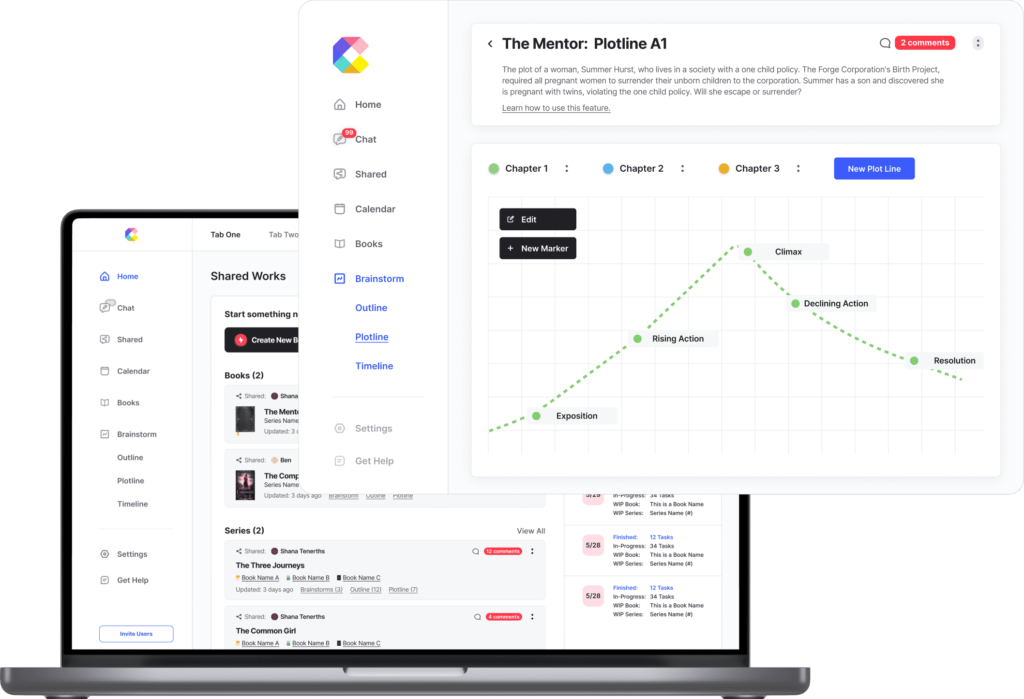Create a Brief Outline or Summary to Give Your Story Structure
Every successful novel is built on a strong foundation, and that foundation begins with a clear story idea. But a great idea alone is not enough; it needs structure to become a compelling narrative. In this article, we’ll explore how to create a brief outline or summary for your novel as an essential part of Step 1: Defining Your Story Idea. This outline will serve as the blueprint for your storytelling journey, guiding you through the twists and turns of your narrative.
The Role of Structure in Storytelling
Structure is the backbone of any well-crafted novel. It provides a framework that helps you organize your ideas, build tension, and keep readers engaged from the first page to the last. A well-structured story ensures that your plot flows smoothly and that your characters’ arcs are compelling and satisfying. Here are some key elements of story structure:
Introduction: The beginning of your novel introduces readers to your characters, setting, and the central conflict. It sets the stage and hooks the reader’s interest.
Rising Action: This section develops the plot by introducing complications, conflicts, and obstacles that your characters must overcome. It builds tension and keeps readers invested in the story.
Climax: The climax is the story’s turning point, where the central conflict reaches its peak. It’s the moment of highest emotional intensity and often determines the fate of your characters.
Falling Action: After the climax, the story starts to wind down. Loose ends are tied up, and characters face the consequences of their actions.
Resolution: The resolution provides closure to the story. It answers lingering questions, resolves conflicts, and gives readers a sense of fulfillment.
Creating an outline or summary at the beginning of your writing process helps you visualize your story’s structure and ensures that it flows logically and effectively.
The Benefits of an Outline
Why should you invest time in creating an outline or summary for your novel? Consider the following advantages:
Clarity: An outline clarifies your story idea, helping you see the big picture and identify any gaps or inconsistencies in your narrative.
Efficiency: With a clear structure in place, you’ll spend less time revising and rewriting later in the writing process. An outline serves as a roadmap, keeping you on track.
Creativity: While an outline provides structure, it doesn’t stifle creativity. In fact, it can inspire new ideas and possibilities as you brainstorm and organize your plot.
Motivation: Having a visual representation of your story’s structure can be motivating. It’s a tangible reminder of the exciting journey you’re about to embark on.
Reader Engagement: A well-structured story is more likely to engage and captivate readers. It keeps them invested in the plot and eager to turn the pages.
Creating Your Outline or Summary
Now that you understand the importance of structure and the benefits of having an outline or summary, let’s dive into the process of creating one:
1. Start with the Basics:
Begin by jotting down the fundamental elements of your story:
- Title: Give your novel a working title that encapsulates its essence.
- Genre: Identify the genre or genres your novel falls under.
- Setting: Describe the time and place in which your story is set.
- Main Characters: List the primary characters, including their names and brief descriptions.
2. Summarize the Plot:
In a few sentences, outline the main plot points of your novel. Focus on the key events that drive the narrative forward. This summary should include the introduction, rising action, climax, falling action, and resolution.
3. Character Arcs:
Consider how your main characters will evolve throughout the story. What challenges will they face, and how will these experiences change them? Note the emotional and psychological journeys of your characters.
4. Subplots:
If your novel includes subplots, briefly outline them as well. Subplots can add depth and complexity to your story and often intersect with the main plot.
5. Themes and Messages:
Reflect on the themes and messages you want to convey through your novel. How do they tie into the plot and character arcs? Make sure your outline reflects the thematic elements of your story.
6. Sequence of Events:
Arrange the main plot points and subplots in a logical sequence. Consider cause-and-effect relationships between events. This will help you maintain a coherent and engaging narrative.
7. Fill in the Details:
While your outline is a high-level summary, you can include more detailed information if it helps you. Some writers prefer to outline chapter by chapter, while others create a broader overview.
8. Be Flexible:
Remember that your outline is a flexible tool, not a rigid blueprint. It can evolve and change as you write and discover new elements of your story. Don’t be afraid to adjust your outline to better serve your narrative.
Conclusion: The Roadmap to Your Story’s Success
Creating a brief outline or summary is an invaluable step in defining your story idea. It provides structure, clarity, and direction for your novel, ensuring that you stay on course throughout the writing process. Your outline is not set in stone; it’s a tool that can adapt as your story evolves. With a well-structured roadmap in hand, you’re ready to embark on the exciting journey of bringing your novel to life, one word at a time.
Unlock your storytelling potential with Charlii! Whether you’re an aspiring author or a seasoned writer, Charlii is your ultimate creative companion.
Download now and start crafting captivating stories today. Your creativity awaits!




